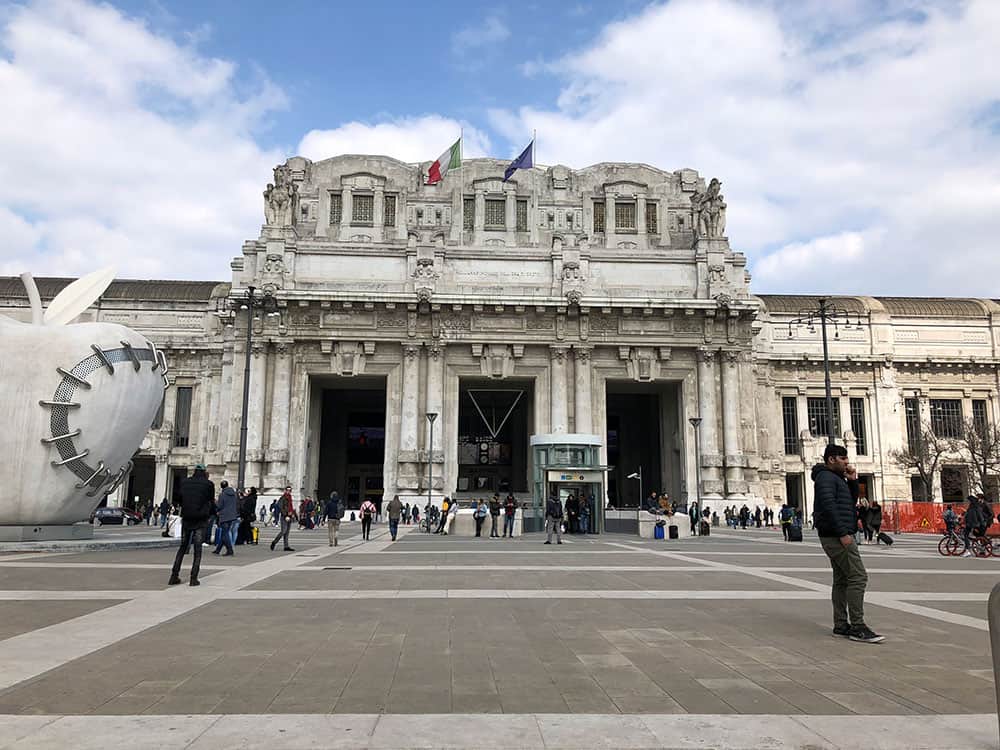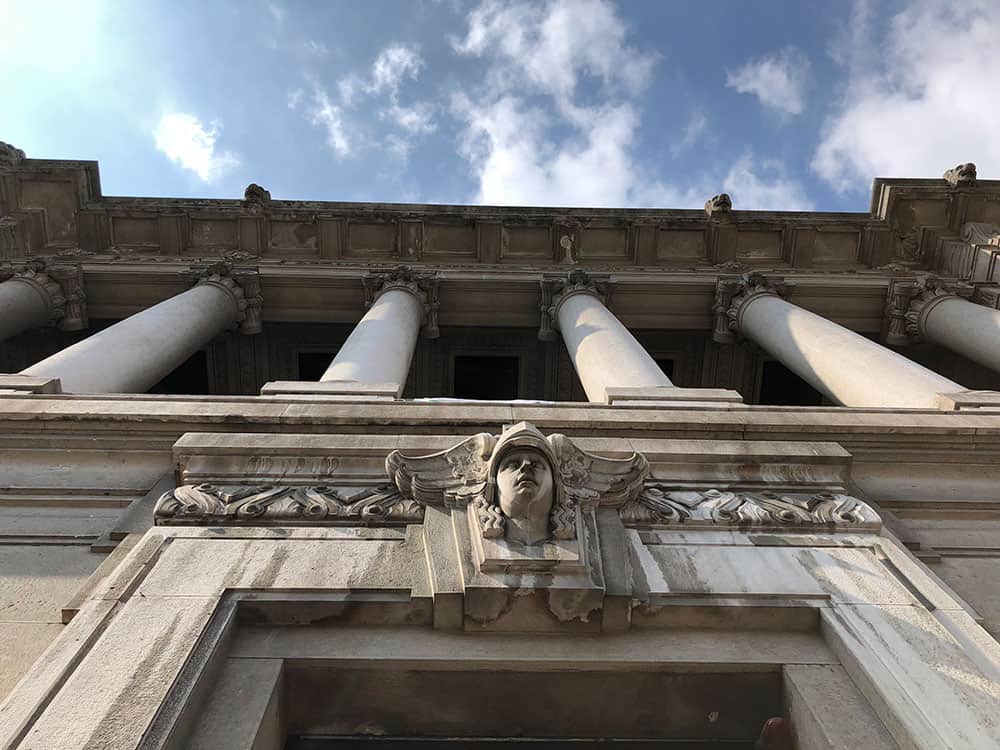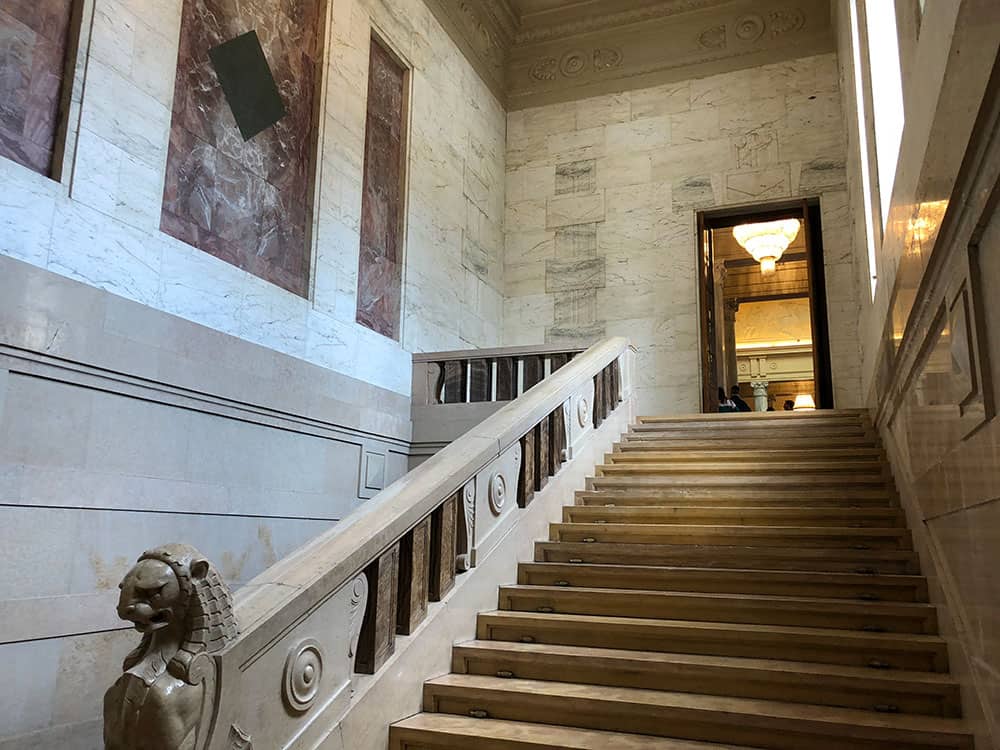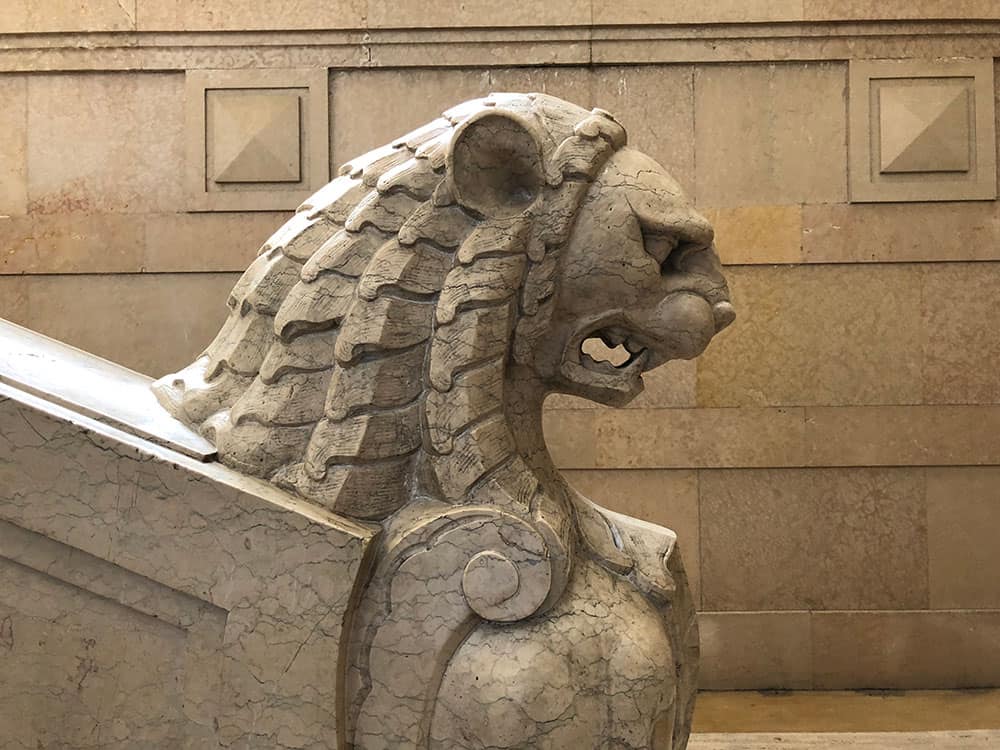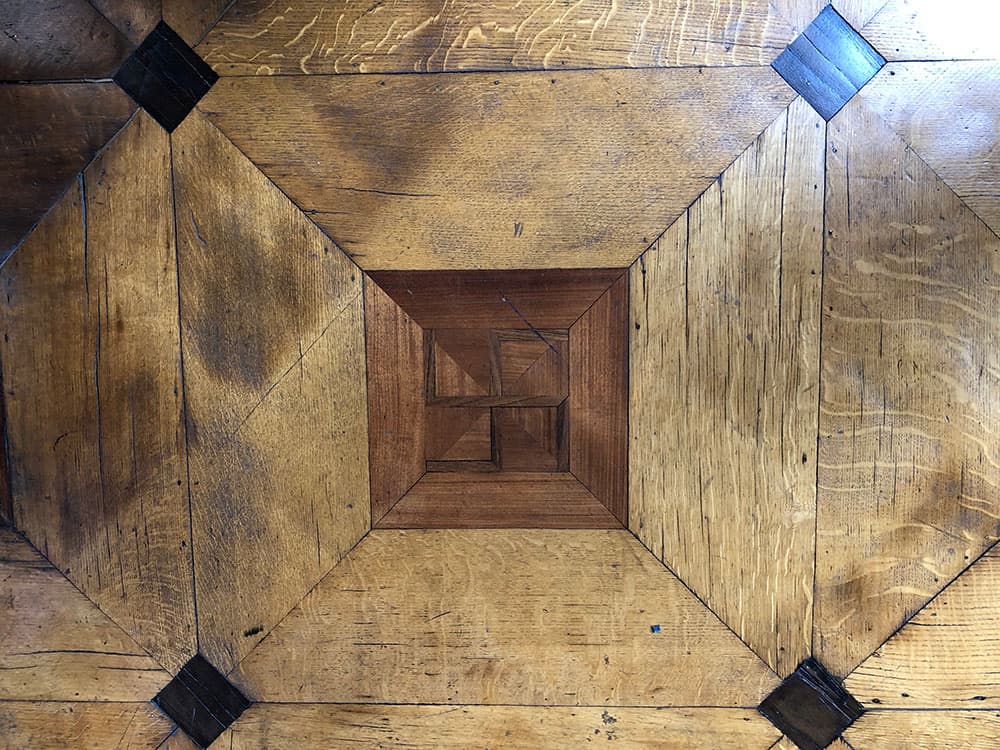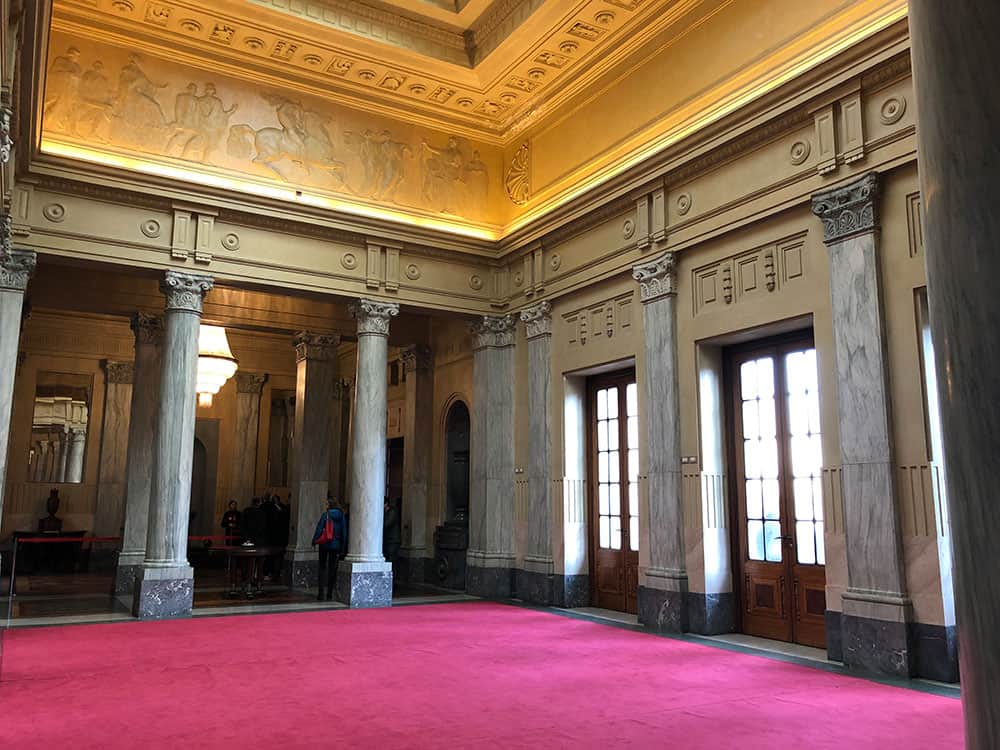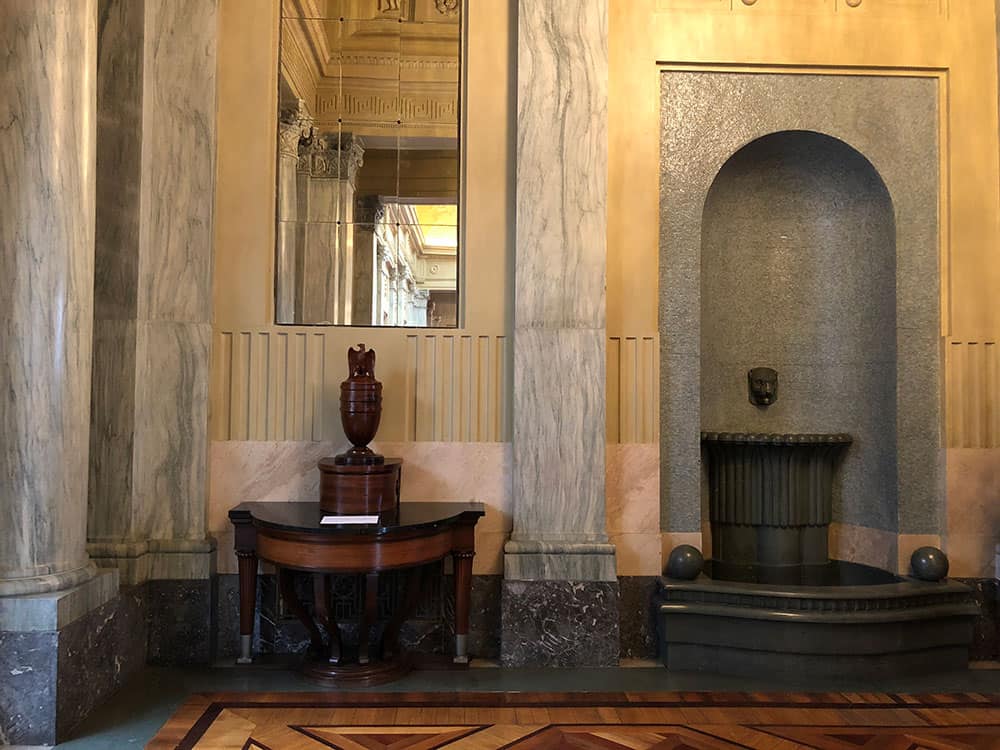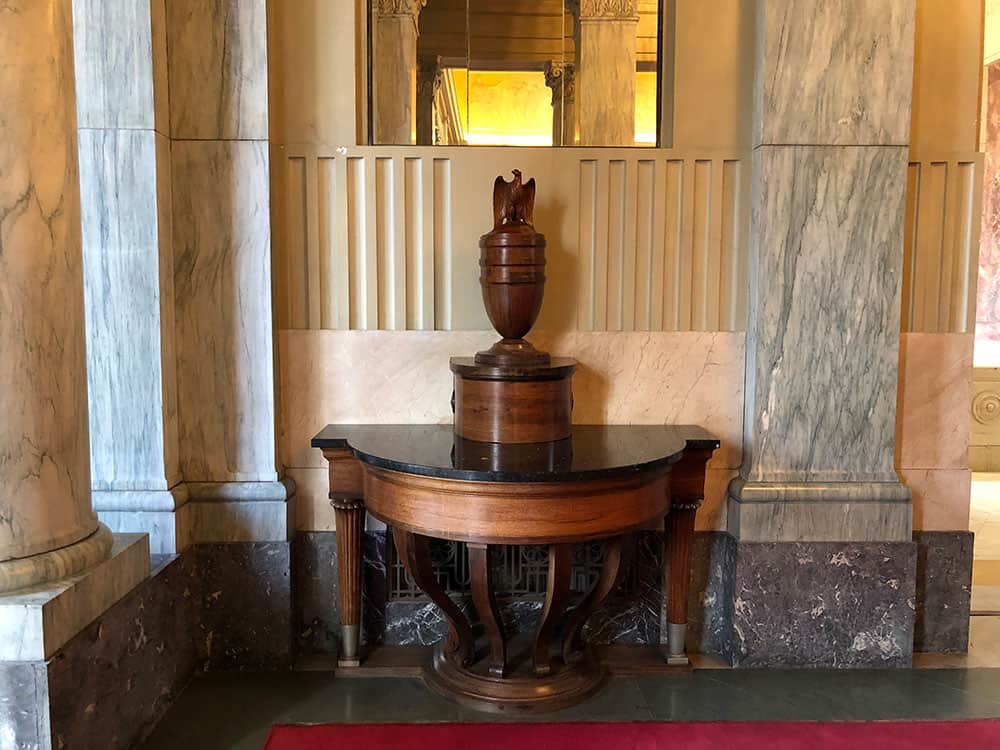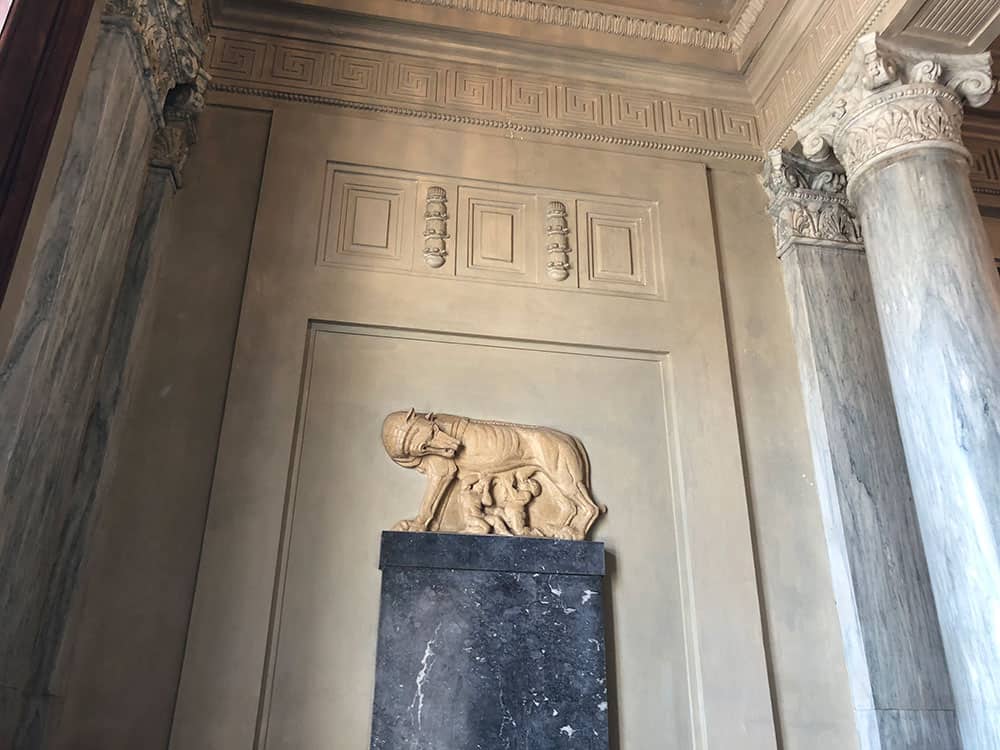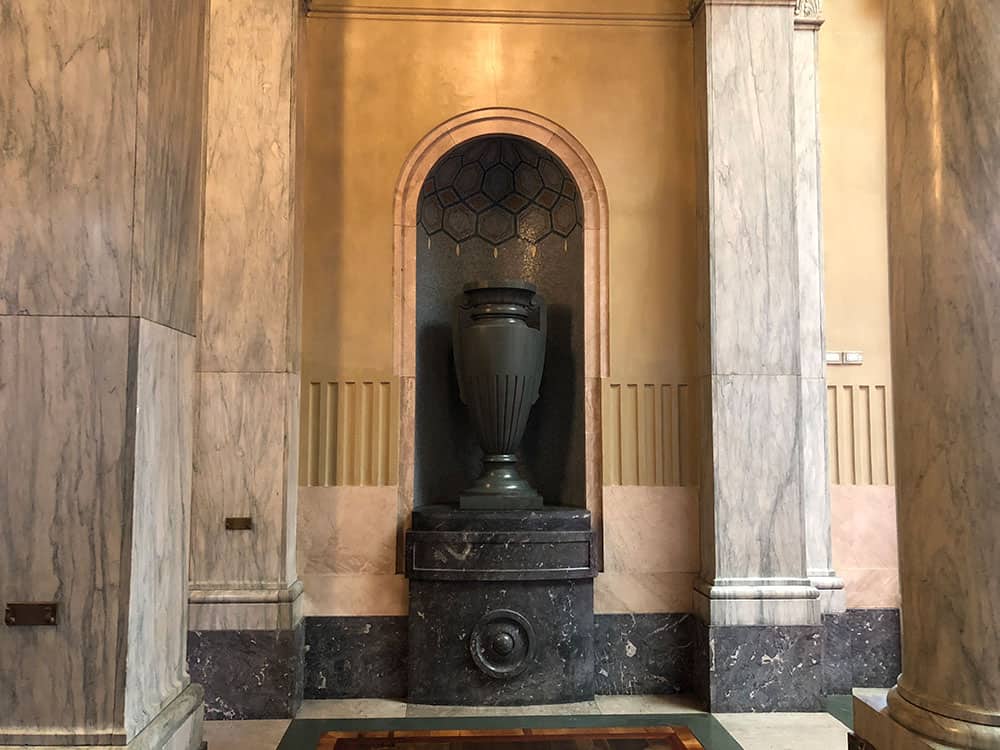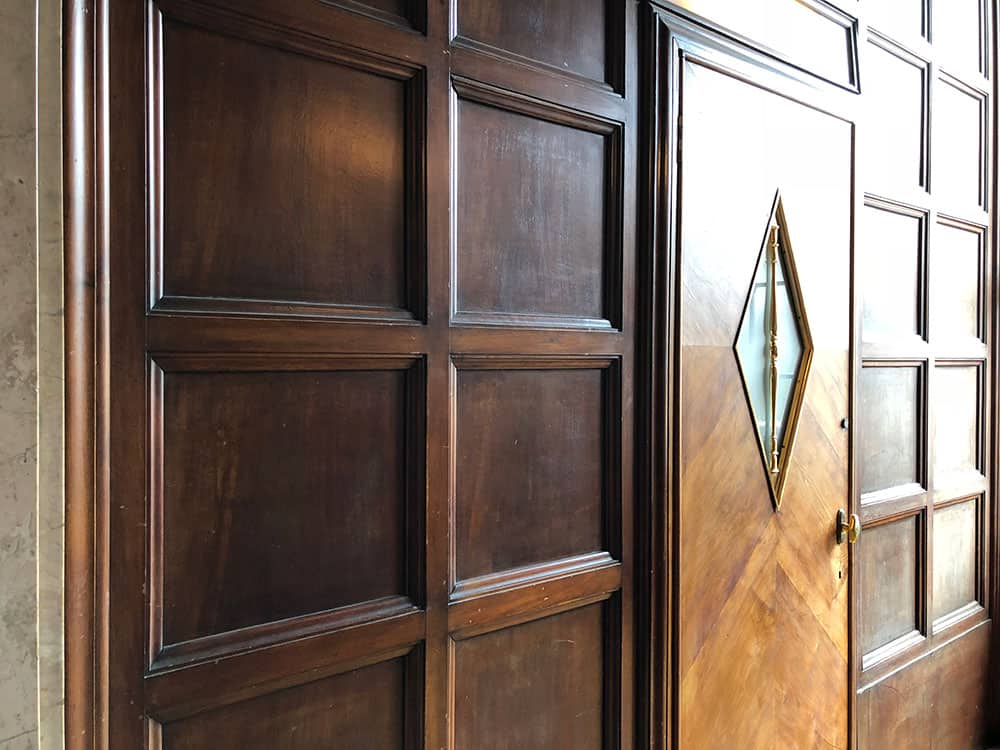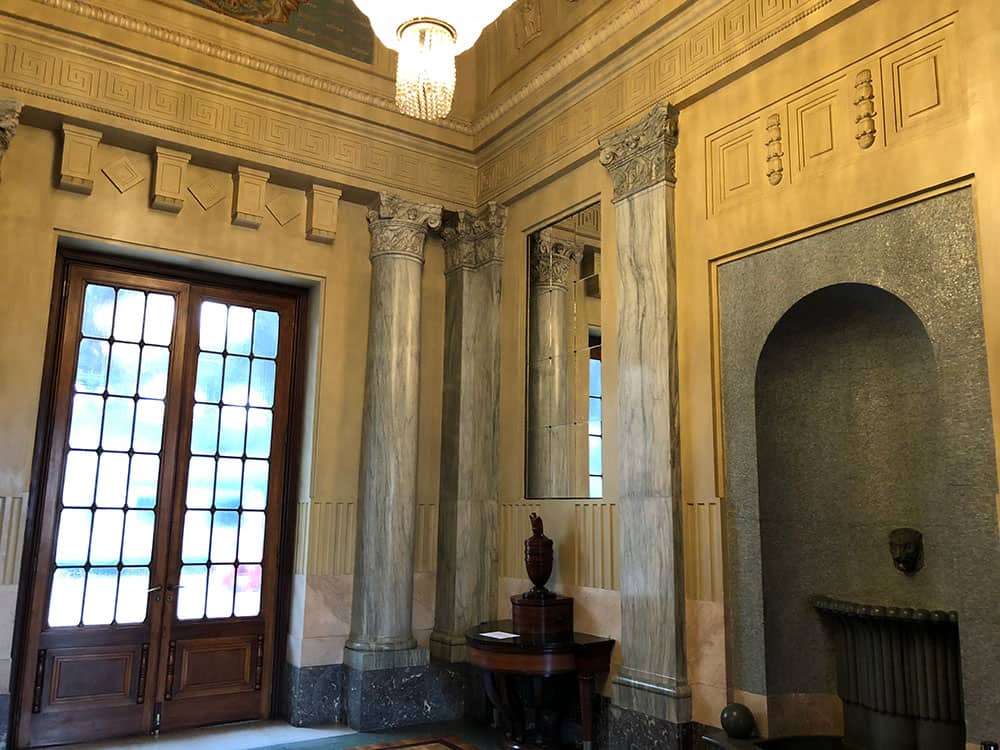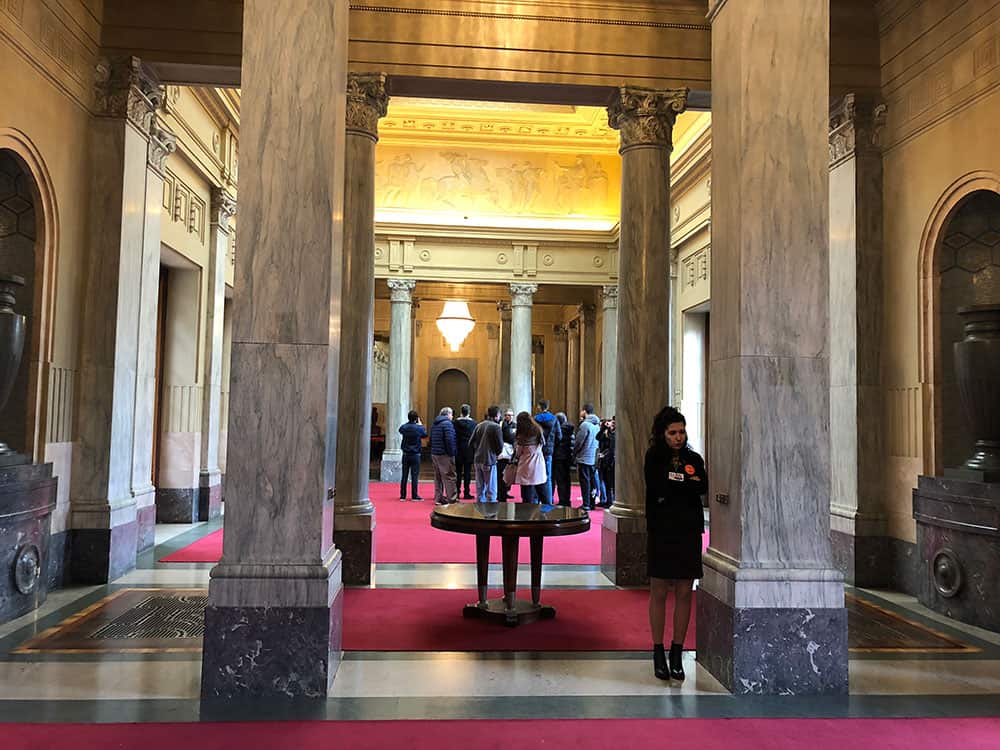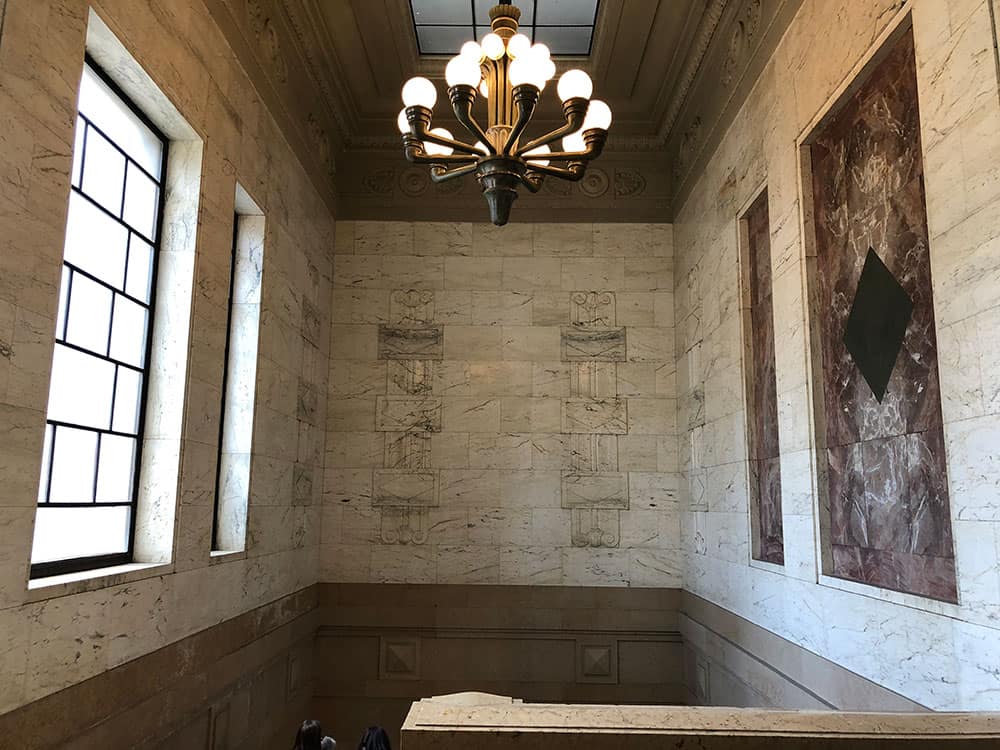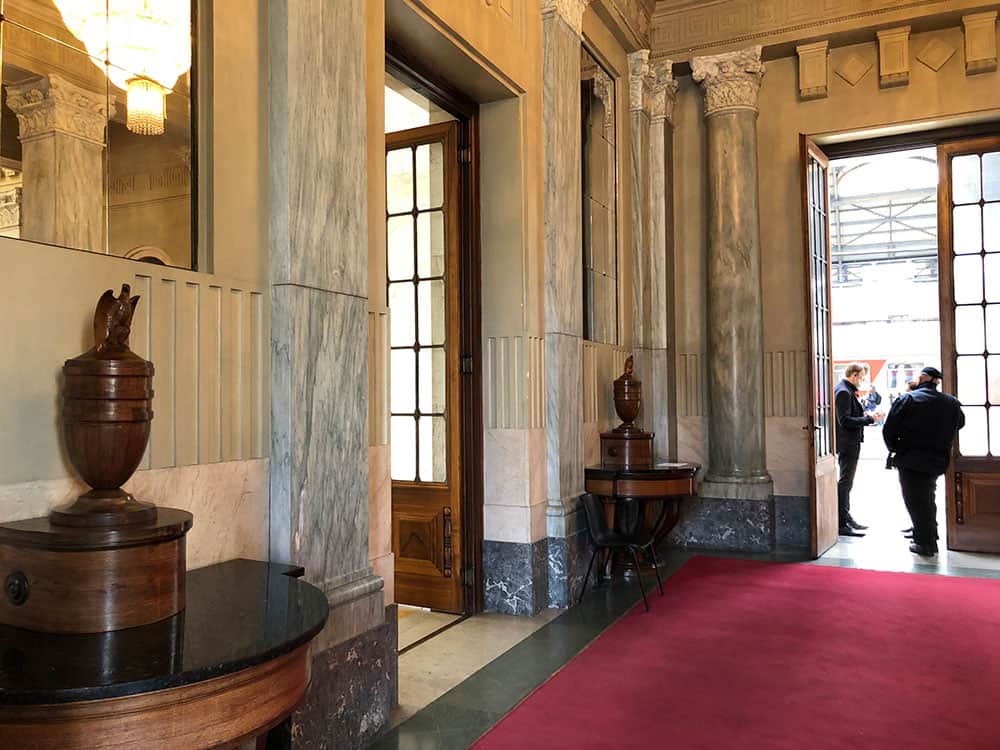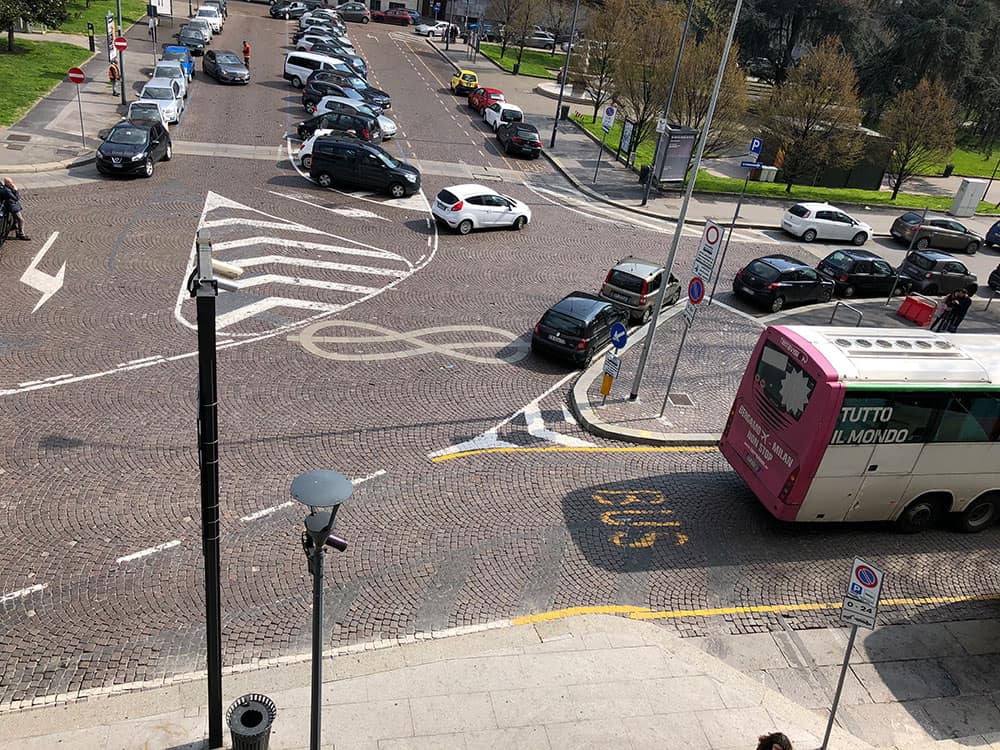This is the week in which Milan is at its best: we are in April and the 58th edition of the Milan Furniture Fair kicks off. What does it mean for us who live in the city? Traffic congestion that far exceeds that of the biennial fashion shows but also a unique opportunity to see a transformed city, invaded by a curious and motivated multi-ethnic crowd, completely open and available to anyone who wants to discover it.
Milan, usually a little stiff and severe, suddenly opens up windows, doors, former factories, workshops, professional offices and garages, everything seems to be within everyone’s reach and it becomes really difficult to navigate among the thousands of offers and recalls. Overwhelmed by this unveiling atmosphere today I will tell you about a “secret salon”, normally closed to the public, that is mainly used for conferences and photo shoots.
I’m talking about the Sala Delle Armi and the Sala Reale in Milan’s Central Station. The Central Station in Milan was inaugurated in 1931 to replace the old central station which was insufficient due to the increase in rail traffic and
the Sala Reale was included in the new project in order to guarantee a proper waiting room of the Savoia family and their court, when they transited in our city for business or to reach Villa Reale in Monza.
The hall that was completely restored during the deep refurbishment of the Central Station that took place between 2005 and 2010, today shows itself in all its splendor.
I had heard a lot about this place that few people in Milan actually had the opportunity to visit because it is open to the public only during the F.A.I. days/events (the F.A.I. is a non-profit organization founded in 1975, modeled on the National Trust, with the aim of protecting and enhancing the Italian historical, artistic and landscape heritage; with a multitude of volunteers they manage to restore, maintain and open to the public hundreds of historical sites otherwise destinated to disappear).
Our first impression, entering this area, which is accessed from a side reserved entrance on the south-east side of the station, was that of a silent monumentality: the wide rooms, the huge windows, the creaky parquet, the large chandeliers seemed to belong to a secluded place, completely separated, far from the chaos of travelers that both Nazim and I know very well. One had the impression that the people comings and goings, the din of arriving and departing trains, the repetition of announcements, the screeching of metal, all took place in a very remote space.
As mentioned, the Royal Room was meant precisely to house the Royal Family in an environment appropriate to its majesty, while they were waiting for the departure of the Royal convoy at Platform 21. The King and the Queen also had the possibility to wait for their departure separately, each of them in the company of their own staff: they could access the train directly, crossing the glazed doors of the Hall.
Everything was studied in detail: the floor was made of inlaid wood and accompanied the royals along a corridor rich in decorations, marbles, mosaics, and furniture of great value.
Speaking of the wood parquet a curiosity hides in the already mentioned inlaid floor: among the many decorative motifs, there is also the swastika, probably inserted in anticipation of the reception of Adolf Hitler, which however never crossed this Hall.
From the imposing balcony, on the upper floor, you can still see in the parking lot below, inlaid in the pavement, the image of an 8 shaped knot which represent the Savoy Family and has been called for centuries in the maritime jargon love knot or Savoy knot.
Perhaps the most mysterious detail is the secret passage that from behind the bathroom mirror offered an escape route in case of extreme emergency. I confess to having been very disappointed to learn that for security reasons it is no longer possible to visit the hidden access.
Actually, the Royal Pavilion is divided into two floors and includes the Royal Room above and the Hall of Arms on the lower floor, so named for the imposing walls decorated with bas-reliefs representing scenes and dynamics of war. The two areas are connected by a spectacular staircase of marble and in this fascinating environment classic, liberty, art deco and exotic elements coexist, neoclassical columns, armchairs with high backs, colored and precious marble, ebony furniture, majolica and frescos and even a wolf of Rome, set in a side wall, supported by a base in green marble and surrounded by composite capitals, Greek mazes and stuccos.
In the fascist era, anything would do to create a sumptuous and regal atmosphere: for decades we all neglected this artificial, presumptuous and grandiloquent style but after century even the aesthetic excesses of the regime acquire their charm.
Betti
[socialWarfare]

